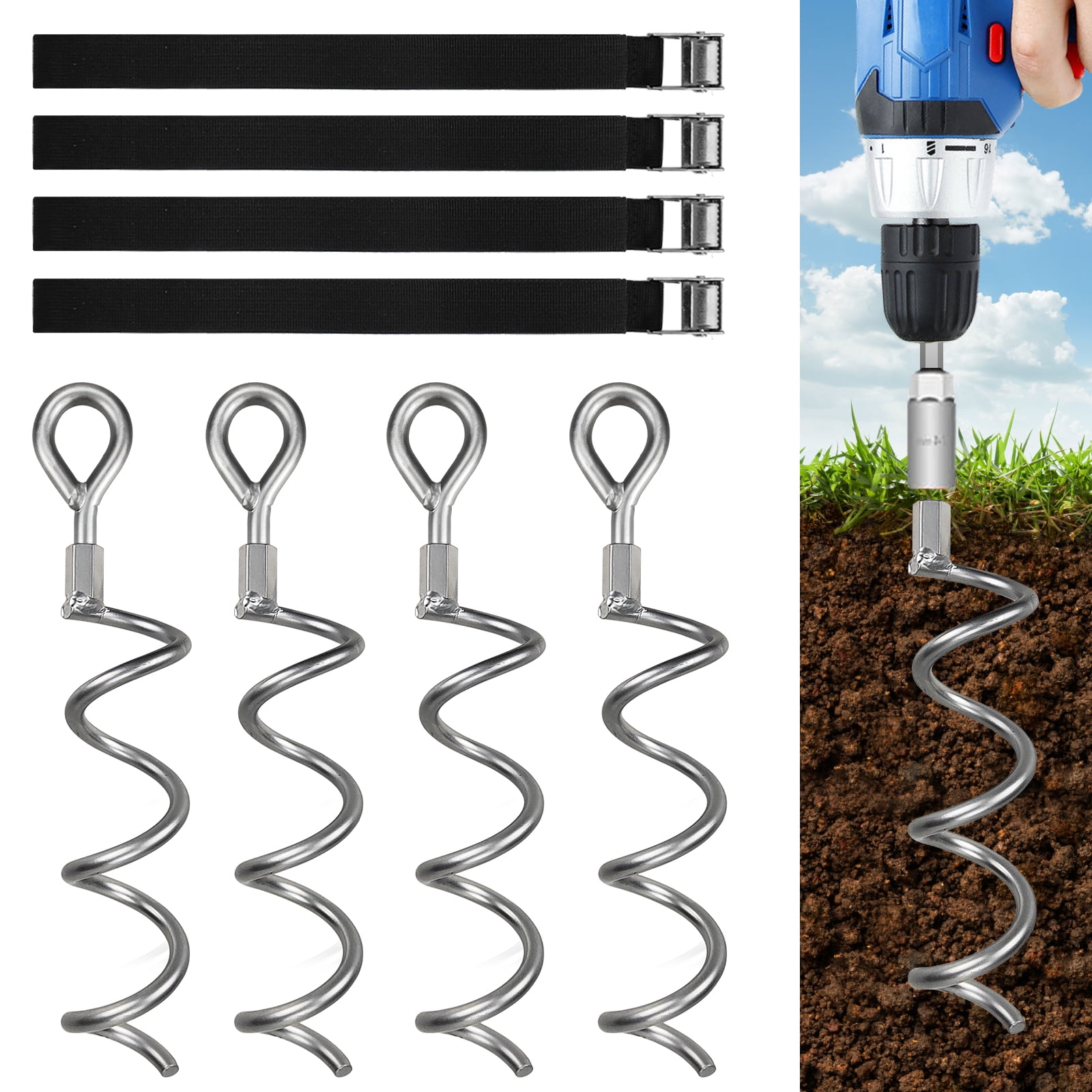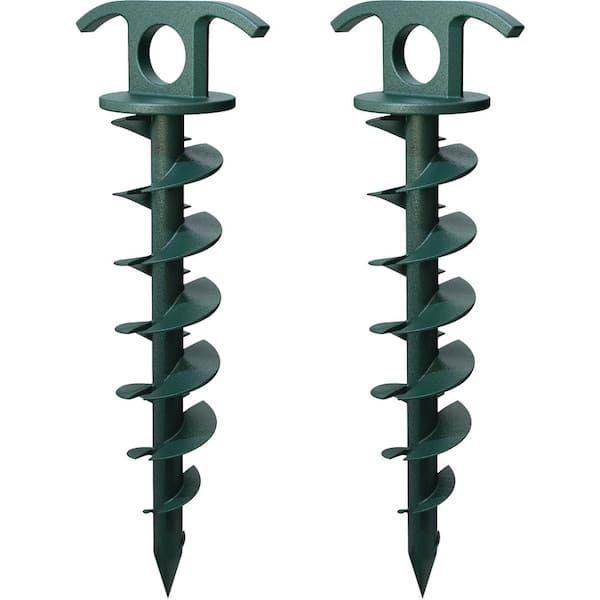Why a Secure Ground Anchor Helps for Trailers
Why a Secure Ground Anchor Helps for Trailers
Blog Article
Explore the Different Sorts Of Ground Support for Your Following Job
When getting started on a building and construction or landscaping project, recognizing the different sorts of ground anchors offered is critical to ensuring both security and resilience (Ground Anchor). From auger anchors, which master diverse dirt conditions, to stake anchors created for short-term setups, the choices are various. Furthermore, concrete and screw supports present special benefits in certain situations, while deadman anchors are tailored for applications needing resistance to lateral forces. The choice of an appropriate support kind can significantly influence the overall success of your task, motivating additional exploration into their respective advantages and applications.

Auger Anchors
Auger anchors are a preferred choice in numerous construction and landscape design projects because of their one-of-a-kind design and effective anchoring capacities. These anchors are composed of a helical screw-like shaft that is driven into the ground, enabling a stable and safe hold. The spiral layout helps with simple installment and maximizes resistance against side forces, making auger anchors especially reliable in applications such as secure fencing, short-term structures, and disintegration control.
The setup procedure of auger anchors is relatively uncomplicated. Auger supports can be easily eliminated and reused, which adds to their cost-effectiveness and sustainability.
One of the significant advantages of auger supports is their ability to disperse lots uniformly throughout the surrounding soil, decreasing the danger of dirt disturbance and reducing ecological impact. In addition, they are much less susceptible to loosening or heaving in time compared to standard anchoring methods. Auger supports are an excellent option for jobs calling for trustworthy and resilient anchoring options.

Stake Anchors
When it concerns safeguarding frameworks in a selection of exterior applications, risk supports supply a trustworthy and simple option. These supports are usually built from durable materials such as steel or light weight aluminum, created to stand up to ecological anxieties while giving optimum security. Their basic style permits quick installation, making them a suitable option for long-term or temporary anchoring needs.
Risk anchors are particularly useful in securing outdoors tents, covers, and various other lightweight frameworks against wind and climate. They work by being driven into the ground at an angle, developing a solid hold that resists pull-out forces - Ground Anchor. The performance of risk supports relies on numerous variables, consisting of dirt kind, wetness content, and the angle of setup
For added security, numerous stake anchors feature accessory factors for ropes or bands, permitting stress modifications as required. In applications such as landscape design or building, they can properly stabilize equipment or frameworks on irregular surface. Overall, stake supports offer a affordable and functional option for protecting numerous exterior installments, making them a preferred option for service providers and do it yourself enthusiasts alike.
Concrete Anchors
Concrete anchors offer a robust option for safeguarding structures to concrete surfaces, making certain stability and safety and security in different applications. These supports are vital for projects varying from household building and constructions to large-scale industrial installations. They come in various kinds, including growth supports, sticky anchors, and undercut supports, each created for particular load demands and environmental problems.
Growth supports anchor depend on mechanical devices to hold the concrete when set up. They are suitable for medium to durable applications. Glue anchors make use of high-strength epoxy or resin to bond the anchor to the concrete, providing superior load-bearing capabilities, especially in cracked concrete circumstances. Undercut anchors produce a distinct form within the concrete, supplying outstanding holding power, especially in applications where tensile lots are common.
Choosing the ideal concrete anchor includes taking into consideration aspects such as the weight of the lots, the problem of the concrete, and ecological problems. Appropriate installation strategies are critical to make certain optimum performance and reliability. When implemented appropriately, concrete supports dramatically enhance the structural integrity of numerous tasks, making them crucial in contemporary construction practices. Understanding the details demands of your project will certainly assist in selecting the right kind of concrete anchor for the job.
Screw Anchors

Screw anchors are a flexible securing service that web can be efficiently employed in a range of applications where traditional concrete anchors might not be sufficient. These supports are composed of a helical layout that permits them to be easily driven into the ground, making them ideal for usage in dirt and various other substratums. Their one-of-a-kind framework offers outstanding holding power and resistance to pull-out forces, making them suitable for many jobs, from landscape design to structural assistance.
One of the key advantages of screw supports is their convenience of setup. They call for very little devices and can commonly be installed without the demand for excavation, which conserves both time and labor prices. In addition, screw anchors can be removed and recycled, providing a lasting option for temporary applications.
Screw supports are particularly advantageous in locations where soil problems are challenging, such as loosened or sandy dirts. Their capability to be mounted at varying midsts allows for modification based upon particular project needs. Generally, screw supports supply a trustworthy and efficient securing method, making them a superb option for specialists and designers seeking reliable remedies for their projects.
Deadman Anchors
Deadman supports function as a durable remedy for maintaining frameworks in tough problems, especially where standard securing approaches may fail. These anchors consist of large, hefty items buried underground, which create resistance against lateral forces. The style generally includes a straight part, such as a block of concrete or a metal plate, buried in the dirt, to which cables or straps are affixed.
The performance of deadman supports exists in their capability to disperse loads over a larger area, minimizing the danger of failing in unpredictable soil problems. They are specifically beneficial in applications such as preserving wall surfaces, short-lived structures, and incline stabilization, where soil movement can compromise the honesty of the structure.
Installation of deadman anchors calls for mindful preparation to ensure they are positioned at the proper depth and positioning, maximizing their load-bearing capacity. While they may call for even more labor and product than light-weight supports, their reliability in negative problems makes them indispensable for lasting jobs. In addition, deadman anchors are versatile and can be adjusted to numerous applications, making them a best choice for designers facing one-of-a-kind challenges in their jobs.
Final Thought
In summary, selecting the appropriate kind of ground anchor is essential for making certain stability and security in various jobs. Auger supports excel in diverse dirt conditions, while stake supports suit momentary applications. For concrete surfaces, growth and adhesive supports supply reliable options, and screw supports offer adaptability in tough surfaces. Deadman anchors are specifically reliable in withstanding lateral pressures for preserving wall surfaces. Mindful factor to consider of these choices will certainly boost job outcomes and architectural stability.
Additionally, concrete and screw anchors existing unique benefits in particular circumstances, while deadman anchors are customized for moved here applications needing resistance to lateral forces - Ground Anchor.Auger supports are a preferred selection in numerous building and landscape design projects due to their unique design and effective anchoring capabilities. They come in various types, consisting of development anchors, sticky supports, and undercut supports, each made for specific load demands and ecological problems
Adhesive anchors utilize high-strength epoxy or resin to bond the support to the concrete, offering remarkable load-bearing capabilities, particularly in cracked concrete scenarios. In general, screw anchors provide a trustworthy and reliable securing approach, making them an exceptional selection for specialists and engineers looking for reliable options for their tasks.
Report this page